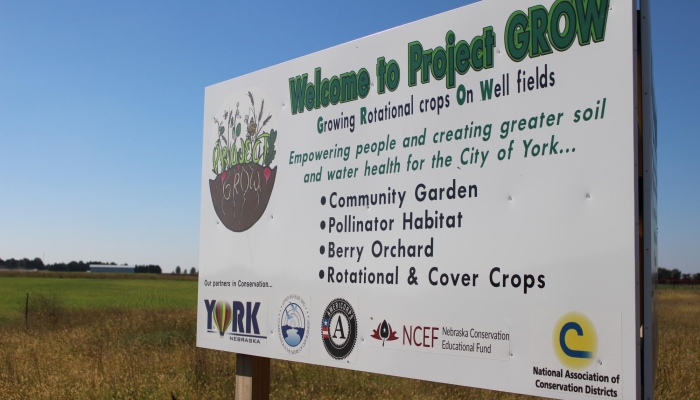Protecting Water, Turning a Profit
Project GROW 2019 reports profit and sustainability
“It was kind of tough.” That simple understatement is how Scott Gonnerman described the 2019 growing season, a cycle impacted by heavy rain and lower than normal temperatures. “We didn’t have a lot of sun or a lot of heat, so it lowered our corn yield. It was not great conditions for high yield growing,” he added. Despite these challenging conditions, the fields Gonnerman farmed with the Upper Big Blue Natural Resources District in York were profitable. More importantly, thanks to the farm practices implemented, Gonnerman and the NRD are improving soil health in the 160 acres of the Project GROW demonstration fields.
Gonnerman, a fourth-generation Nebraska farmer, has been farming in York County since 1976 and has been working toward greater environmental sustainability through his farm practices since 2008. He and his wife, Barb, were recognized with a Master Conservationist distinction by The World-Herald in 2018—the same year he began collaborating with the Upper Big Blue Natural Resources District and the City of York on Project GROW.
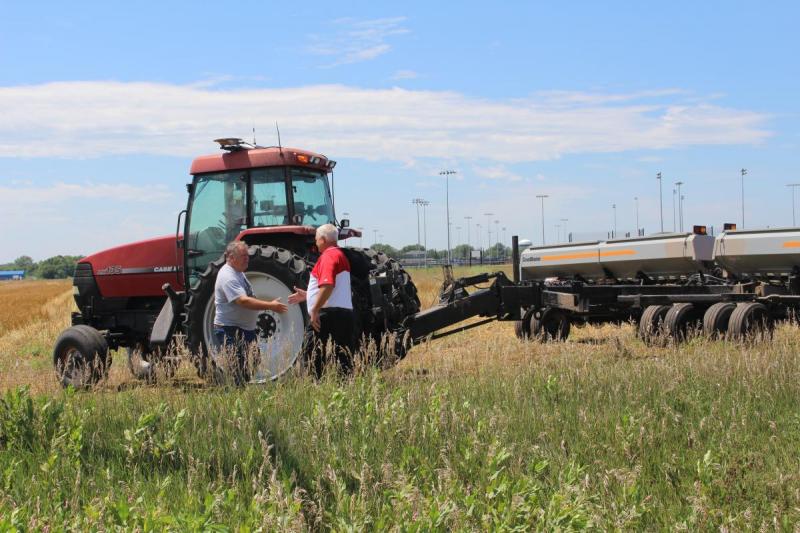
Scott Gonnerman and David Eigenberg, Upper Big Blue General Manager, at the Project GROW demonstration fields in 2018 as Scott prepares to sow cover crops
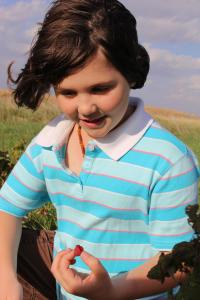 The purpose of Project GROW (Growing Rotational crops on Wellfield) is to improve the drinking water supply for York residents by improving soil health in the wellfield (near the ballfield complex on the northeast side of town). Underwritten by a Source Water Protection Grant from the Nebraska Department of Environment and Energy, Project GROW uses no-till, diverse cover crops, and proven crop rotations to improve soil health, decrease soil erosion, and improve water holding capacity--all while maintaining profitability. One of the main goals of the project is to maintain the quality of the drinking water produced from the wellfield, as a healthy soil acts as a filtering system to the aquifer and decreases nitrogen leaching and contamination into the water supply.
The purpose of Project GROW (Growing Rotational crops on Wellfield) is to improve the drinking water supply for York residents by improving soil health in the wellfield (near the ballfield complex on the northeast side of town). Underwritten by a Source Water Protection Grant from the Nebraska Department of Environment and Energy, Project GROW uses no-till, diverse cover crops, and proven crop rotations to improve soil health, decrease soil erosion, and improve water holding capacity--all while maintaining profitability. One of the main goals of the project is to maintain the quality of the drinking water produced from the wellfield, as a healthy soil acts as a filtering system to the aquifer and decreases nitrogen leaching and contamination into the water supply.
Separate from the commercially farmed fields, the project also includes a berry orchard, a pollinator patch, and community garden plots.
At the conclusion of the second growing season at Project GROW, Gonnerman and the Upper Big Blue Natural Resources District are reporting information about their 2019 methods and results to encourage other producers in the region to adopt the practices they have implemented.
Project GROW: 2019 Methods and Results
Project GROW fields were planted with triticale (a wheat-like cover crop) and hairy vetch (a nitrogen-fixing legume) in the fall of 2018. The cover crops fed the soil as they grew through the winter and into the 2019 spring months, turning sunshine above ground into carbon below ground. The cover crops also tied up residual nitrate-nitrogen in the soil that would have otherwise had the potential to leach into the drinking water supply.
The triticale and vetch were terminated after conventional (non-GMO) corn was planted in one field and conventional soybeans in the other, but the cover crops didn’t stop being useful when they stopped growing; instead they provided a weed barrier around the corn and beans and continued to feed the soil as they decomposed, making the residual nitrogen it had absorbed while growing available to the new year’s crop. The barrier over the soil also increased moisture retention for the soil and prevented erosion.
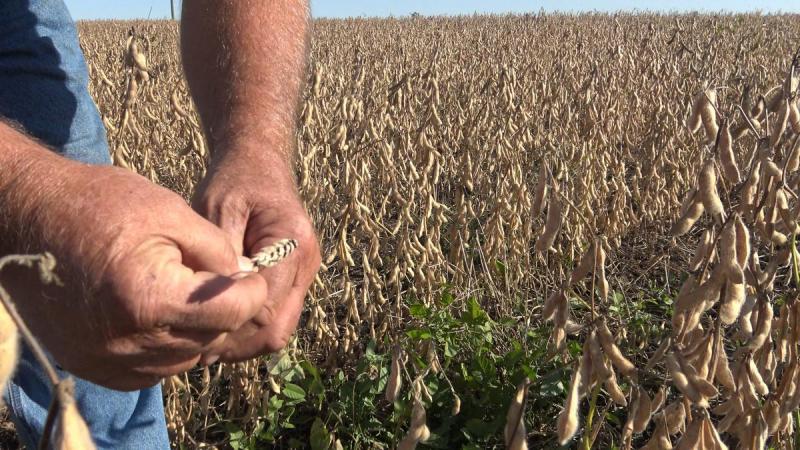
Water Conservationist Dan Leininger examines a remnant of the triticale cover crop at Project GROW
Soil tests conducted prior to planting in 2019 confirmed low levels of residual nitrogen from the previous growing season. How low? There was about one-third as much residual nitrogen in the soil at the Project GROW fields as there was in the average commercially farmed soils reported to the Upper Big Blue Natural Resources District in Phase II and III areas (where high levels of nitrate have been recorded in the drinking water). Some Phase III growers in the district reported residual nitrogen levels nearly ten times higher than the Project GROW fields in the same time period.
Parts of York County are in a Phase III management area as nitrate levels are above the safe drinking water standards set by the Environmental Protection Agency.
Residual nitrogen and leaching can be caused by over application of nitrogen fertilizer, as well as non-optimal timing of application, so Gonnerman was conscientious about the timing and quantity of fertilizer applied. No fertilizer was applied in the fall or pre-plant, as those practices lead to greater nitrogen leaching risk to groundwater. Instead, Gonnerman applied 40 pounds of nitrogen to the corn at the time of planting and an additional 80 pounds at the time of tasseling (R-I), utilizing a y-drop system that placed the nitrogen directly at the base of the corn stalks.
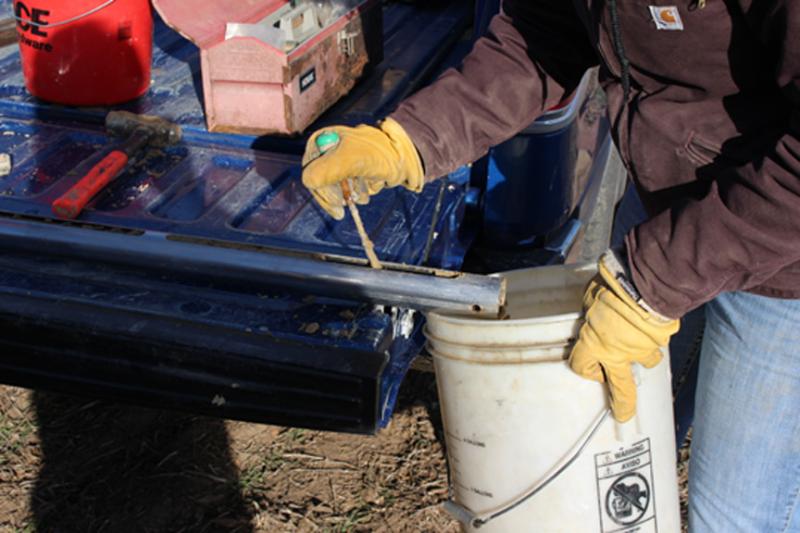
Soil sampling at Project GROW
As farmers well know, nitrogen fertilizer is expensive and managing this input is critical to profitability. Gonnerman has focused on lowering his nitrogen use efficiency ratio (a measure of yield divided by amount of fertilizer applied) through the years on his own property. His increased efficiency means that while the average amount for district growers has remained around 1.1 pounds of nitrogen per bushel for decades, Gonnerman has improved his operation to be successful at 0.65 by maintaining yields while using less nitrogen.
Gonnerman reported that the nitrogen efficiency at Project GROW in 2019 was 0.68 lbs of nitrogen per bushel.
The split application of fertilizer was significant in reducing the amount of residual nitrogen at Project GROW in 2019 as heavy rainfall during the growing season meant that some of the corn planted was flooded out. No additional nitrogen was applied to the areas where flooding occurred, which meant a direct cost savings as well as a reduction in the amount of nitrogen that would have leached into the water supply.
After harvest, both of the Project GROW fields were seeded with rye, in keeping with Gonnerman’s growing philosophy: “Every time a combine leaves the field, a planting drill follows.” Keeping something growing in the soil is essential to maintaining soil health. In the north Project GROW field, the rye will be harvested as a cash crop in June or July. In the south field, soybeans will be sown into the rye and the rye will serve as a cover crop.
Despite the wet weather conditions that delayed planting and harvest, the Project GROW fields recorded a profit while using methods that improve soil health. Profits generated are returned to the City of York—providing a revenue stream as well as improved water quality for citizens.
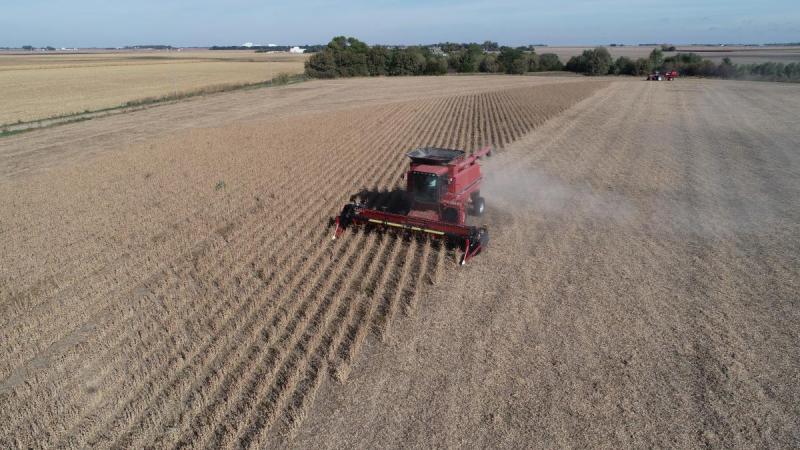
2019 Soybean Harves at Project GROW
Soil health can be measured in several ways. One test looks at the amount of microbial activity in the soil. Another common method examines the infiltration rate (how quickly water is absorbed by the soil). A healthy soil will have high levels of microbial activity and will more quickly absorb water. These tests were completed in 2018 to create a baseline reading for the Project GROW fields and will be repeated this spring to determine the level of improvement after two years of farming using no-till, cover cropping, rotational cropping, and minimal inputs.
The level of improvement to the water supply will take years to see, as nitrogen moves slowly through the soil. However, measuring the residual nitrogen in the soil each spring is a good indicator of the success of the Project GROW efforts. This number will also be reported after soil testing in the spring and is expected to be as low or lower than the previous year.

